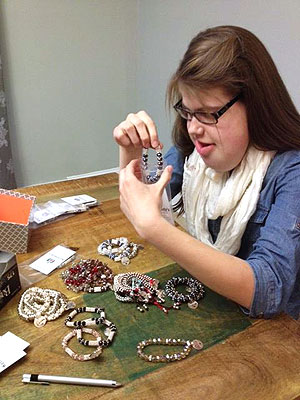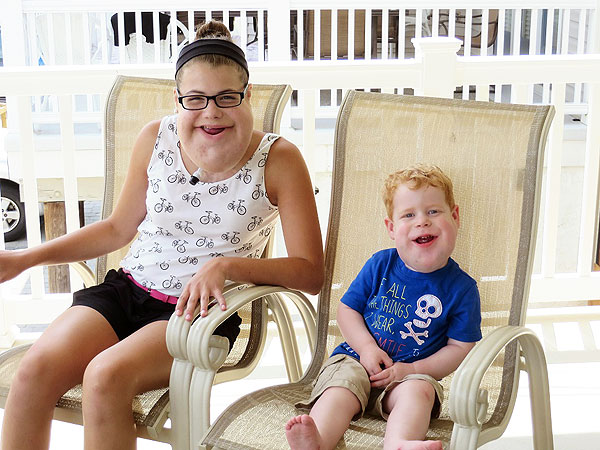Family speaks out after mystery diner's good deed, encouraging note
CHINA GROVE, NC - A family in Rowan County got an unexpected, and inspiring, note when they were out to dinner on Friday. A photo of the note is going viral.
Ashley England went to dinner at the Stag-N-Doe pizza restaurant in China Grove with her family on Friday evening, including her 8-year-old son, Riley. The family was sitting at the table when Riley, who has special needs, began to get "a little rowdy."
"He threw the phone and started screaming," she recalled. "The past few weeks have been very hard and trying for us - especially with public outings. Riley was getting loud and hitting the table and I know it was aggravating to some people."
Just when England was ready to leave, a waitress appeared.
"I'll try to do this without crying," the waitress told the family. "But another customer has paid for your bill tonight and wanted me to give you this note."
The note read: "God only gives special children to special people.”
Riley is non-verbal and has been through three major brain surgeries for a severe form of epilepsy. The seizures started when he was 18-months-old, robbing him of his speech. His mom says he had more than 100 seizures a day.
Riley's frustration with being unable to speak, often leads to outbursts England says causes many to cruelly judge her son.
"Until a person has walked in the shoes we have walked in," she said. "They have no right to say one thing."
What they should focus on instead? Remembering the one thing she longs to hear from Riley.
"They take just a simple 'I love you' from your child for granted," she said.
"Because you have never heard that from your son?" asked WBTV's Brigida Mack.
"Never," England replied, getting choked up. "Never."
England says the kindness of the mystery diner made her cry.
"To have someone do that small act towards us shows that some people absolutely understand what we are going through and how hard it is to face the public sometimes," she said. "They made me cry, blessed me more than they know - I felt like out of all the rude negative comments that we are faced with - these outweighs them. The people who care!"
She says she wants to say thank you to the person that paid for their meal and sent the encouraging words.
"Little did he know what struggles we had been facing lately and this was surely needed at that moment," she said. "Thank you!"








 Reply With Quote
Reply With Quote







Bookmarks